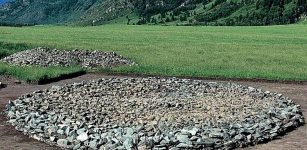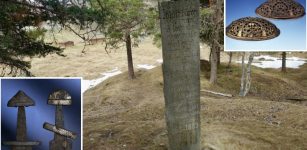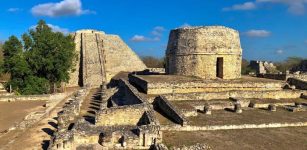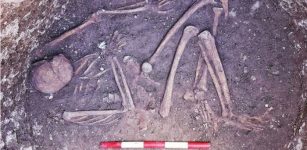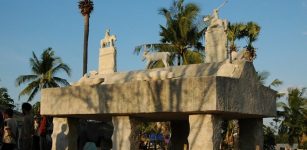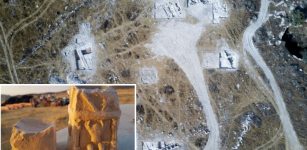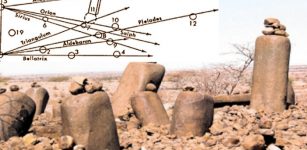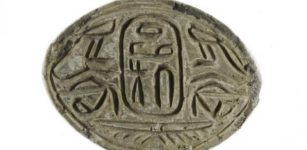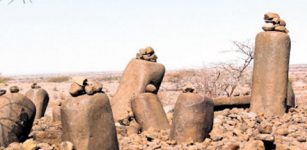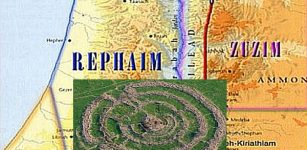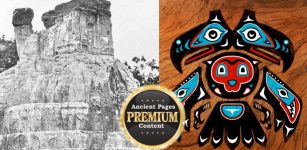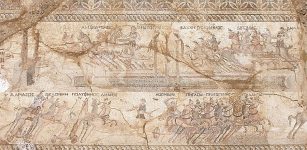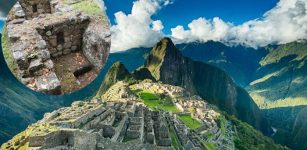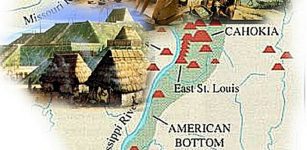Did Easter Islanders Commit ‘Ecocide?
Jan Bartek - AncientPages.com - Approximately 1,000 years ago, a group of Polynesian settlers embarked on a remarkable journey across the Pacific Ocean, ultimately colonizing a remote, uninhabited island they named Rapa Nui, now known as Easter Island. This isolated landmass became the site of an impressive cultural achievement: the construction of hundreds of colossal stone statues called "moai," which have since become iconic symbols of this ancient civilization.
Traditionally, the narrative surrounding Rapa Nui's history suggested a cautionary tale of environmental mismanagement. According to this account, the population grew rapidly, leading to overexploitation of resources. This purportedly resulted in widespread deforestation, extinction of local wildlife, soil degradation, and, ultimately, societal collapse. By the time European explorers reached the island in 1722, only a fraction of the original population remained.
Mysterious Maori Statues under the Milky Way Galaxy on Easter Island. Credit: Adobe Stock - PTZ Pictures
However, recent research has proposed an alternative interpretation of Rapa Nui's history. This new study challenges the concept of ecocide, suggesting that the island's population did not experience unsustainable growth. Instead, the research indicates that the settlers developed adaptive strategies to cope with the island's limited resources, maintaining a relatively small and stable population over several centuries.
This revised perspective on Rapa Nui's history emphasizes the resilience and ingenuity of its inhabitants rather than portraying them as victims of their own environmental mismanagement. It underscores the importance of ongoing archaeological and historical research in refining our understanding of past civilizations and their relationship with their environments.
Recent research has uncovered new evidence regarding the population of Easter Island. Archaeologists have discovered an advanced system of "rock gardens" used by the islanders to cultivate sweet potatoes, a crucial component of their diet. These gardens were designed with remarkable ingenuity to maximize crop yield in the island's challenging environment. According to the researchers' analysis, the total area of these gardens was limited in size, suggesting they could only sustain a population of a few thousand individuals.
"This shows that the population could never have been as big as some of the previous estimates," said lead author Dylan Davis, a postdoctoral researcher in archaeology at the Columbia Climate School. "The lesson is the opposite of the collapse theory. People were able to be very resilient in the face of limited resources by modifying the environment in a way that helped."
Easter Island, also known as Rapa Nui, is widely regarded as one of the most geographically isolated inhabited locations on Earth, and is believed to be among the final territories to be colonized by human populations. The island's nearest continental landmass is central Chile, situated approximately 3,540 kilometers to the east. Approximately 5,150 kilometers to the west lie the tropical Cook Islands, from which settlers are hypothesized to have embarked circa 1200 CE.
The island, encompassing an area of approximately 163 square kilometers, is composed entirely of volcanic rock. However, in contrast to other lush tropical islands such as Hawaii and Tahiti, volcanic activity on Easter Island ceased several hundred thousand years ago. Consequently, the mineral nutrients typically introduced by lava flows have long since been depleted from the soil.
Situated in the subtropical region, the island experiences a comparatively more arid climate than its tropical counterparts. Further compounding the challenges faced by its inhabitants, the surrounding oceanic waters descend precipitously, necessitating greater effort in the harvesting of marine resources compared to other Polynesian islands that benefit from easily accessible and productive lagoons and reefs.
The settlers employed an agricultural technique known as lithic mulching or rock gardening to address these environmental constraints. This method involves the strategic distribution of rocks across low-lying areas that are at least partially shielded from salt spray and wind. The inhabitants cultivated sweet potatoes within the interstices between these rocks, a staple crop well-suited to the island's unique conditions.
Rock mulching is a traditional agricultural technique that has been scientifically studied and found to have several benefits. Research indicates that rocks ranging from golf ball-size to boulder-size play a crucial role in modifying local microclimates. These rocks disrupt drying winds and create turbulent airflow, which has two primary effects: it reduces peak daytime surface temperatures and increases minimum nighttime temperatures.
The practice also involves breaking rocks into smaller pieces by hand. This process exposes fresh mineral-rich surfaces. As these newly exposed surfaces weather, they release valuable nutrients into the soil, potentially enhancing its fertility.
While some islanders continue to utilize these rock gardens, it's important to note that despite the significant labor involved, their productivity remains relatively low. Interestingly, this technique is not unique to one location. Similar practices have been documented among indigenous peoples worldwide, including New Zealand, the Canary Islands, and the southwestern United States.
Some researchers have proposed a hypothesis regarding the island's historical population. They suggest that the population must have been significantly larger than the approximately 3,000 residents first recorded by European explorers. This theory is based partly on the presence of the massive moai statues. The reasoning behind this hypothesis is that constructing these enormous statues would have required a much larger workforce than a population of 3,000 could provide.
In recent years, researchers have endeavored to estimate historical population figures by examining the extent and production capacity of rock gardens. Early European estimates suggested these gardens covered approximately 10% of the island's surface area.
A 2013 study utilizing visual and near-infrared satellite imagery proposed a range of 2.5% to 12.5%. However, this estimate is characterized by a significant margin of error due to the limitations of spectral analysis, which only differentiates between rocky and vegetated areas, not all of which necessarily constitute gardens. Subsequently, a 2017 study identified approximately 7,700 acres, or 19% of the island, as potentially suitable for sweet potato cultivation.
Various studies have attempted to estimate past population figures by making assumptions regarding crop yields and other relevant factors. These estimates suggest that historical populations may have reached as high as 17,500 or even 25,000 individuals. However, it is important to note that these figures are uncertain, and actual population numbers could have been substantially lower.
In the new study, scientists conducted comprehensive on-site surveys of rock gardens and their characteristics over a five-year period. Utilizing this data, the team subsequently developed and trained a series of machine-learning models to identify gardens through satellite imagery. These models were calibrated to newly available shortwave infrared spectra, highlighting rocks and areas of increased soil moisture and nitrogen content, key indicators of garden locations.
The researchers' findings indicate that rock gardens occupy approximately 188 acres, constituting less than 0.5% of the island's total area. While acknowledging the possibility of overlooking some smaller gardens, they assert that any omissions would not significantly alter their conclusions. Based on a series of assumptions, the researchers postulate that if the entire diet were derived from sweet potatoes, these gardens could have sustained a population of approximately 2,000 individuals.
However, isotopic analysis of skeletal remains and other evidence suggests that historical populations likely obtained 35% to 45% of their dietary intake from marine sources, with a minor contribution from less nutritionally dense crops such as bananas, taro, and sugar cane. When accounting for these additional food sources, the estimated population carrying capacity increases to approximately 3,000 individuals, which aligns with the population observed upon initial European contact.
"There are natural rock outcrops all over the place that had been misidentified as rock gardens in the past. The short-wave imagery gives a different picture," said Davis.
Carl Lipo, an archaeologist at Binghamton University and co-author of the study, said that the population boom-and-bust idea is "still percolating in the public mind" and in fields including ecology, but archaeologists are quietly retreating from it.
He said that accumulating evidence based on radiocarbon dating of artifacts and human remains does not support the idea of huge populations. "People's lifestyle must have been incredibly laborious," he said. "Think about sitting around breaking up rocks all day."
The island's population currently stands at approximately 8,000 residents, with an additional influx of approximately 100,000 tourists annually. While the majority of food is now imported, a subset of the population continues to cultivate sweet potatoes in traditional gardens—a practice that experienced a resurgence during the 2020–2021 COVID-19 pandemic lockdowns when import restrictions were implemented. Some residents have also adopted mainland agricultural techniques, including soil plowing and applying synthetic fertilizers. However, Dr. Lipo posits that such methods are likely unsustainable due to the potential for further depletion of the already thin soil layer.
Seth Quintus, an anthropologist at the University of Hawaii who was not involved in the study, said he sees the island as "a good case study in human behavioral adaptation in the face of a dynamic environment."
The new study and others like it "provide an opportunity to better document the nature and extent of strategies of adaptation," he said. "Surviving in the more arid subtropics on the more isolated and geologically old Rapa Nui was a heck of a challenge."
The study was published in Science Advances
Written by Jan Bartek - AncientPages.com Staff Writer


